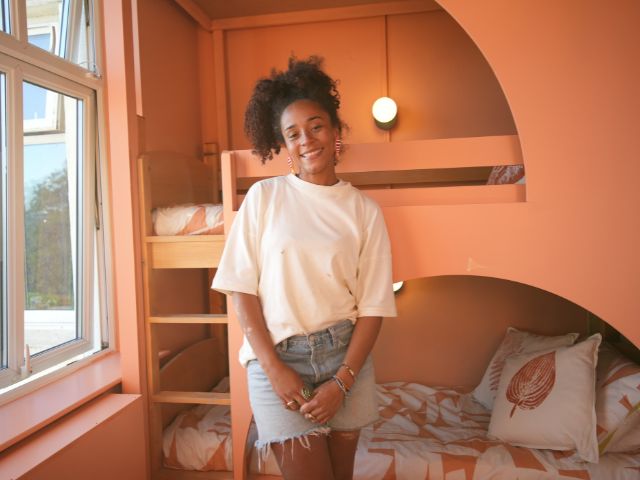
Image Credit: BBC
9 common decorating dilemmas solved by Interior Design Masters’ Ayisha
Interior Design Masters is back for a sixth series and we’re already hooked.
The ultimate crash course in interior design sees host, Alan Carr, welcome ten rookie designers looking for their big break in the home décor landscape.
Overseen by interiors guru, Michelle Ogundehin, and several notable guest judges including Laurence Llewellyn-Bowen, the contestants cut their design teeth on weekly challenges to win a collaboration contract with John Lewis to produce their own line of home furnishings.
Hoping to showcase her design credentials and secure top spot is Ayisha Onuorah, 33, who enjoyed a successful career in modelling before having children and deciding to switch her attention from fashion to interiors.
“It was kind of a natural progression,” she tells Good Homes of her style pivot.
“I knew that I didn’t want to do fashion forever.
Then around COVID, I started renovating my own home, realised there was more to it and thought, ‘Okay, I need to get into this a bit more’.”
Ayisha signed up for a short course in interior design, followed by a degree.
“Every day when I walked into university I remember feeling immense gratitude, because it was like a second-chance career.
“I would literally look around and be like, ‘I can’t believe I’m here doing this. I’ve found my thing’.”
It was while she was in the second year of her course she decided to put herself forward for IDM.
“I’d never even seen it,” she admits.
“I didn’t really watch TV much, but I was at the design centre and they were giving out fliers so I just decided to apply there and then.”
While she describes the filming of the show as ‘intense’ she says the experience taught her a lot.
“I learned so much,” she explains.
“I definitely improved as a designer through facing various different challenges.”
Her biggest hurdle, she says, was overcoming the unforeseen obstacles it was impossible to prep for.
“I pride myself on being really organised, having all my plans and trying to troubleshoot beforehand,” she explains.
“But then you come across random things you can’t plan for. For example, one of the walls I had was concrete, and we just didn’t expect that.
“We were trying to connect something to the wall, and no matter what we did, we just couldn’t.
“Another time my materials arrived and they just weren’t in the right condition,” she continues.
“You think, ‘oh my God, I thought about things all night long, was thinking about it in my dreams, but you just can’t prepare for certain things.”
Those personal challenges she faced on the show, coupled with her professional experience advising her own clients, means Ayisha is best placed to solve some of the most common decorating dilemmas people are navigating in their own homes.
From making a budget makeover feel high-end to getting onto the same style page as your partner here she shares her design wisdom to troubleshoot the issues many of us come across in our own internal spaces.

Design dilemma: Making a small space feel bigger
Of course small can be beautiful, but that doesn’t curb the desire for bigger.
A survey by Ready Steady Store reveals that half of us are craving some additional square footage in our humble abodes.
Thankfully, according to Ayisha, there are some simple yet effective tricks to make your interiors seem more spacious than they are.
She suggests playing with scale, by using large rugs, big mirrors or oversized art.
“I feel like people think in a small space you have to put small things, but that can actually make it feel cramped,” she explains.
“It’s the same thinking with a dark space.
“People automatically think they need to go against that and lighten it up but sometimes it is good to embrace what you have.”
Another trick for making a pocket-sized space feel larger is something Ayisha showcased in episode one of IDM while making over a tiny hostel bedroom – colour drenching.
“Even though the room was small I wanted to make it feel cosy,” she explains.
“Drenching with colour can help because you don’t have any visual breaks.
“It makes the room feel bigger and more expansive even though people probably think it will do the opposite.”
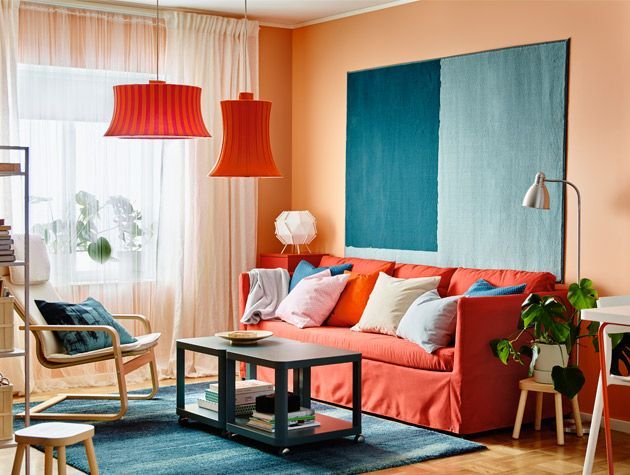
Design dilemma: Trying to make ceilings feel higher
Given the option, most of us would choose high ceilings over low ones as high ceilings create a feeling of spaciousness.
On the flip side, however, low ceilings can make you feel closed-in.
But there are some tricks to create the illusion of grandeur, including being clever with lighting.
“Lighting up a wall draws the eye up,” explains Ayisha.
“Other ways to draw the eye up include using floor to ceiling curtains, tall, slim furniture, tall lamps and vertically striped wallpaper,” she adds.
Alternatively, you could make the ceiling more of a feature by using it as the fifth wall.
“I’ve never done a mural on a ceiling, but in my spare rooms I have coloured ceilings.
“The walls are off-white, and then one’s got a sage green ceiling and the other is pink.
“My painter said ‘I’ve been doing this for 50 years and I’ve never seen a coloured ceiling, but I’m like ‘why not?’.
“Ceilings are often overlooked, but they don’t have to be white and boring.”
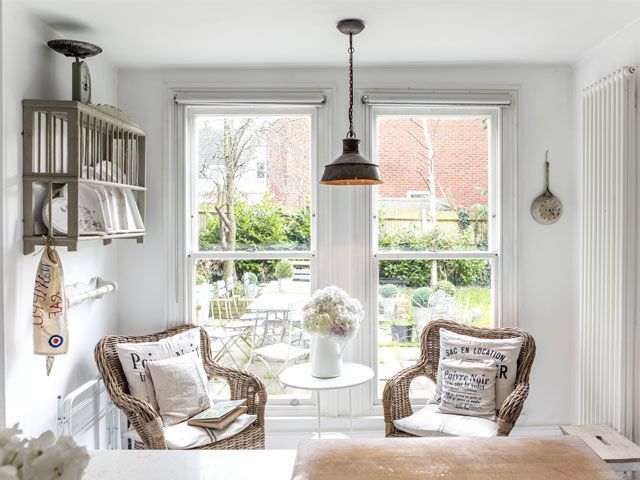
Design dilemma: Preventing an open plan space from feel too empty
Open plan has been the go-to layout for decades, but recent research has revealed our love affair with one-space living may be starting to wane.
In its Home Improvement Trends Report tradesperson search site Rated People found that of the one in three homeowners who planned to improve their homes, a significant proportion wanted to throw up internal walls with “broken plan homes” surging in popularity.
According to Ayisha, however, there are some ways to make large open spaces feel that bit cosier, starting with zoning.
“There’s a temptation with open plan to just dump the furniture in the middle, but that often doesn’t work,” she explains.
Instead she suggests zoning the space through layout or utilising key pieces of furniture and furnishings, for example, rugs, to define the different areas.
“You could also introduce alternative lighting in the different zones,” she continues.
“In my kitchen, I’ve got three zones.
“It’s a big open plan space, but I’ve got a breakfast zone, a lounging zone and a dining zone and I’ve separated them by using different pendant light fittings.
“I’ve also got tiles in one corner, so you can create the zones using different pattern and colours.”
Ayisha also suggests creating partitions with pieces of furniture like shelving or a book case, behind a sofa, for example.
“It’s still open and you’re not blocking the light or the flow through the space, but it does create the effect of having a room within a room,” she adds.
Another option is utilising paint to define the zones.
“If you don’t want to fill the space with a lot of stuff colour blocking is an effective way to zone areas.
“By colour blocking a corner of an open space it effectively designates it as a particular area and it really works,” she explains.
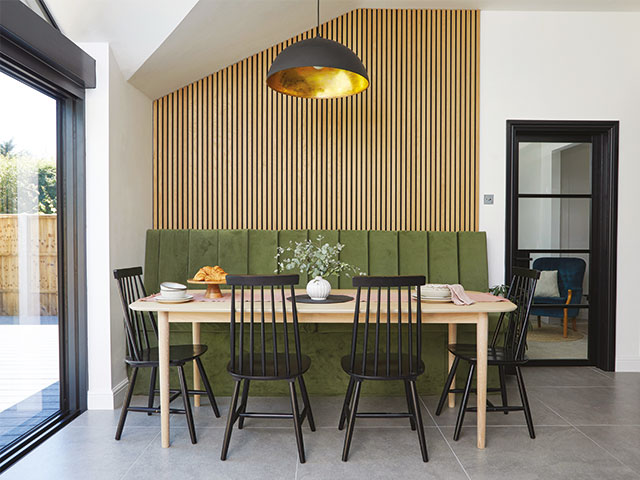
Design dilemma: Making a dark room feel lighter
When asked about their must-haves in a dream home, Gen Z put natural light as their second most important demand, after a garden.
The survey, by Conservatory Land found 22% of those born between 1997 and 2012 craved a light, bright home.
If your home isn’t blessed with light-filled spaces, however, Ayisha has some suggestions for making a room appear brighter, starting with layering your lighting.
“In my kitchen I’ve got 12 circuits, and my electrician was like ‘you’re taking it too far’, but lighting is really important because you can really change the mood and the vibe of the space,” she explains.
“Sometimes lighting is a bit of an afterthought, but it is just as important as the design of the room. There are a lot of principles of lighting that are really important.”
Ayisha says layering your lighting means mixing and matching multiple light sources – ambient lighting, task lighting and accent lighting – and balancing these kinds of light to create atmosphere in the room.
“Don’t just have one individual ceiling or pendant light,” she recommends.
“You can have architectural lighting, which can highlight some features in the space, so if you had an arch in your room you could light that nicely.
“And if you have it on a dimmer you can quickly change the feel of a room.”
There is another option for dealing with the darker spaces in your home, according to Ayisha, lean into the cosy.
“I’ve got a dark hallway in my house downstairs, and I’m about to colour drench it in a really dark colour,” she explains.
“The painters are horrified but I think sometimes it is better not to fight against the darkness, but embrace it.”
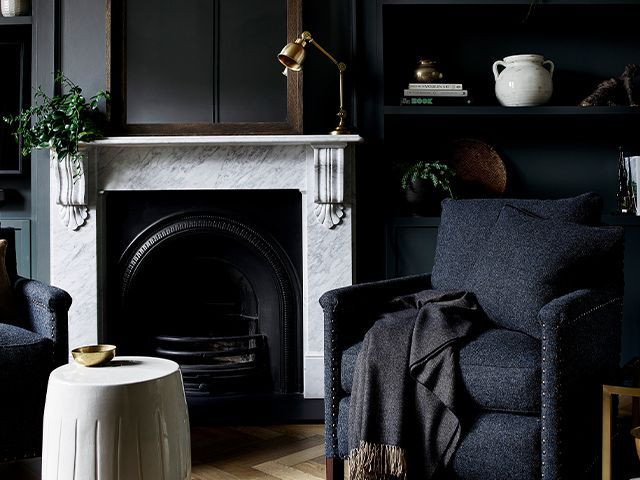
Design dilemma: Making the most of an awkward space
From unused nooks to unusually narrow rooms, many of us are scratching our heads for design ideas in spaces that aren’t perfectly square-shaped, but there are some solutions including going bespoke, even on a smaller budget.
“Bespoke doesn’t have to be expensive,” explains Ayisha.
“My daughter has got a little niche in her room and I made her some shelving to go in there just from a piece of wood which I primed and painted.
“You wouldn’t be able to buy anything off the shelves to fit in the space, but making something bespoke just makes the space useful.”
Ayisha suggests also using an awkward space for built in storage or turning it into a reading corner with a little chair and a light.
“I think awkward usually means that you avoid it, but it is possible to turn the space into something small and functional,” she adds.
“Rather than just shoving a random piece of furniture in there, give the space a purpose and make it useful.”
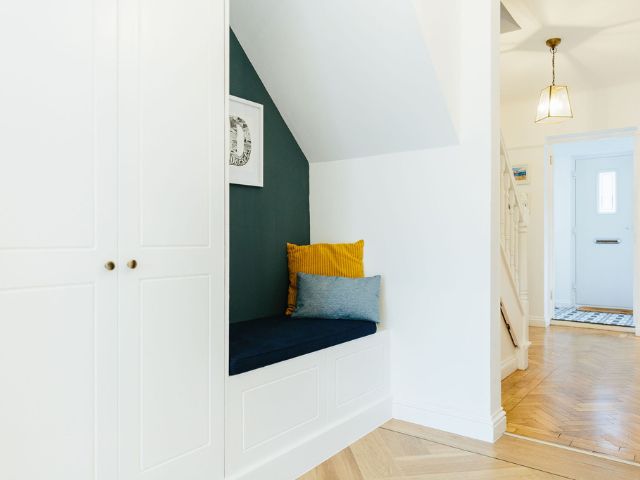
Design dilemma: Not being able to agree with a partner about a decorating style
Forget arguing over money or household chores, turns out nearly half of couples have been at loggerheads with their partner of the decor in their home.
So how do you find a happy design medium?
“I’m really lucky because me and my husband have a similar vibe when it comes to the décor in our house and most of the time he lets me do my thing,” Ayisha continues.
“But I have had to compromise with some things. He drew the line when I tried to paint all the skirting in the downstairs red!”
If you and your partner aren’t coming from the same decorating viewpoint Ayisha suggests letting one person take the lead or agreeing to keep things quite simple.
“If you keep the base of the room quite neutral then you can add in different accents via soft furnishings, like cushions and curtains, which can be changed more easily if your partner really hates them,” she says.
“You can make a big difference to the space through those accents.”
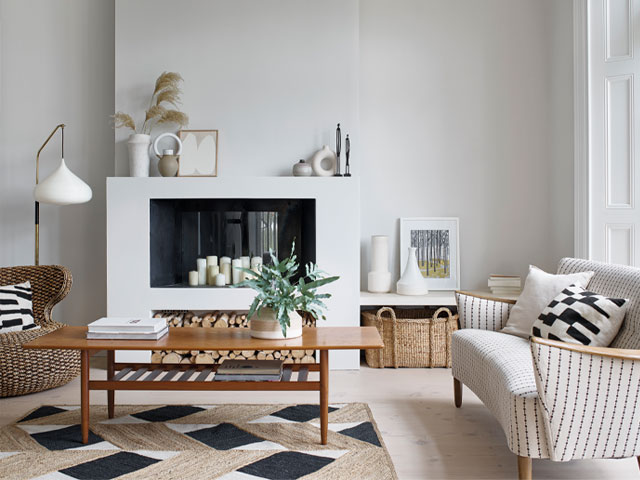
Design dilemma: How to make a design feel more high end, even if you’re on a budget
Most of us have the desire to create a home to make the Insta-set envious, but sometimes our Champagne plans have to be scaled back due to the realities of a lemonade budget.
But according to Ayisha you don’t have to splash the cash to give your rooms the sort of luxurious touches that hint at high-end.
“Texture and mixed materials can really elevate a design,” she explains.
“Matte versus gloss, soft elements versus structure, mixing up materials just adds visual interest.
“One of the things we learnt early on at design school was the benefits of using a lot of different textures, which is something you see in high-end spaces.”
Good styling can also make a space feel more luxe.
“On a coffee table, for example, a lovely book stack, a vase and some really well-placed intentional objects can make a room feel curated.
“I take a lot of time styling my own coffee table at home and I change it quite regularly.”
If you need to add to your collection of accessories, Ayisha suggests scouring your local charity shop for luxury-looking finds.
“I recently bought some alabaster candle holders from a charity shop and they look really expensive, but were probably only £2,” she says.
“If you’re getting a lot of high street off-the-shelf stuff, it can feel a bit samey.
“Adding in unique elements that you won’t see in everyone else’s home is really important.”
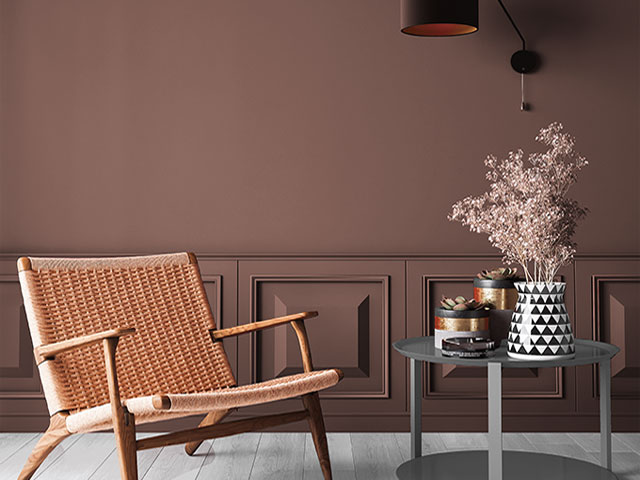
Design dilemma: How to decorate a narrow hallway
Ayisha suggests introducing a focal point even if the space is tight.
“Maybe you could have a slim console table, or if you want to keep the floor space free put up a floating shelf, or a narrow bench,” she says.
“It’s about trying to add function and structure to the space.”
Mirrors also open up the space and bounce the light around.
“I’ve just put a mirror by my front door and I did it purposely because I knew I was going to paint it a dark colour so it will help to play with the light.”
Another trick is utilising the vertical space in a hallway tight on square footage.
“You could have hooks, a coat rack or shelving up on the wall without cluttering up the space,” Ayisha adds.
Adding a runner is another tip.
“This will make it feel more like a room rather than a transient space,” she explains.
“Don’t just overlook the hallway, but try to make a room of it.
“So you could put a plant in there, or a nice print or even a diffuser to make it smell nice and change the vibe.
“Scent is often overlooked in a home, but it is so important.
“If you go to a high-end hotel it always smells lovely and you notice it straight away so you can introduce a similar feeling to your own hallway with scent.”
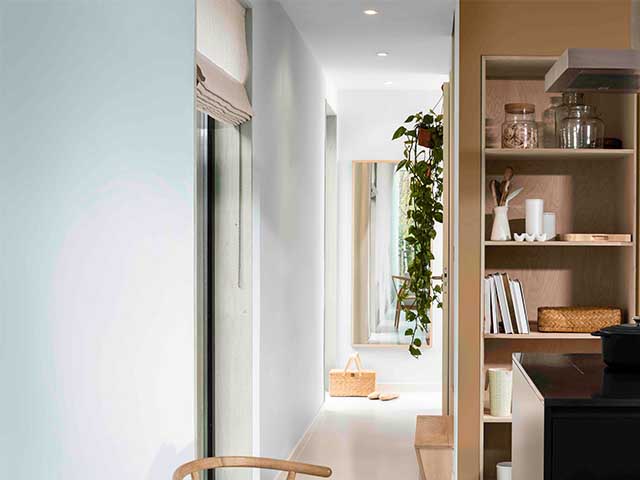
Design dilemma: Upgrading your kitchen without replacing it
With figures from Checkatrade revealing the cost of a high-end kitchen can stretch from anything from £30,000 – £55,000, homeowners are often on the lookout for ways to work with what they have.
And according to Ayisha there are some simple tricks to cheat your way to a new-look kitchen, without the hefty price tag.
“I actually did this in my own kitchen,” she explains.
“I have a new kitchen now but when we first moved in I knew I couldn’t really afford to do what I wanted to do, so I used colour to change things.
“Painting the cabinets and switching the handles can make such a big difference to the space.”
Ayisha says another change-up suggestion is wrapping existing cabinets with vinyl.
“I haven’t actually done this in any of my own projects, but I have seen it done and it looks really good, like a brand new kitchen,” she says.
If you know you’re going to change your kitchen in the future but are looking for a high-impact, quick-fix in the meantime, Ayisha says tile stickers can be a good option.
“I’ve used them before and was surprised at how good they were. It’s a really quick, cheap and impactful way to completely change the look of the kitchen.”
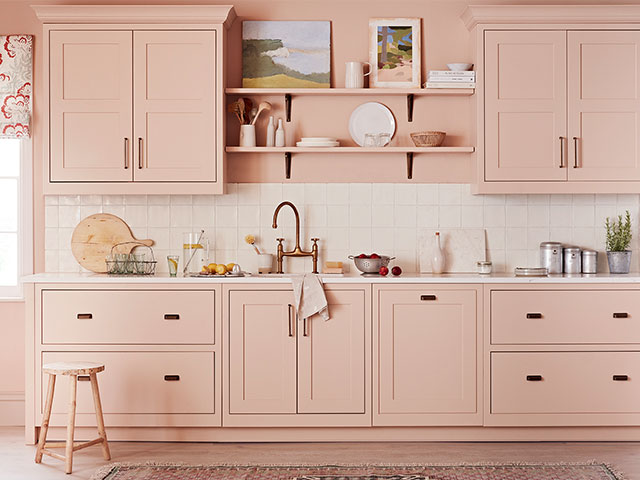
Interior Design Masters with Alan Carr airs weekly on Thursdays at 8pm on BBC One and BBC iPlayer.
Looking for more interiors inspiration? Take a look at Pistachio interiors: 11 ways to get the viral look in your home or 11 things George Clarke wants you to know about layout
READ MORE:





